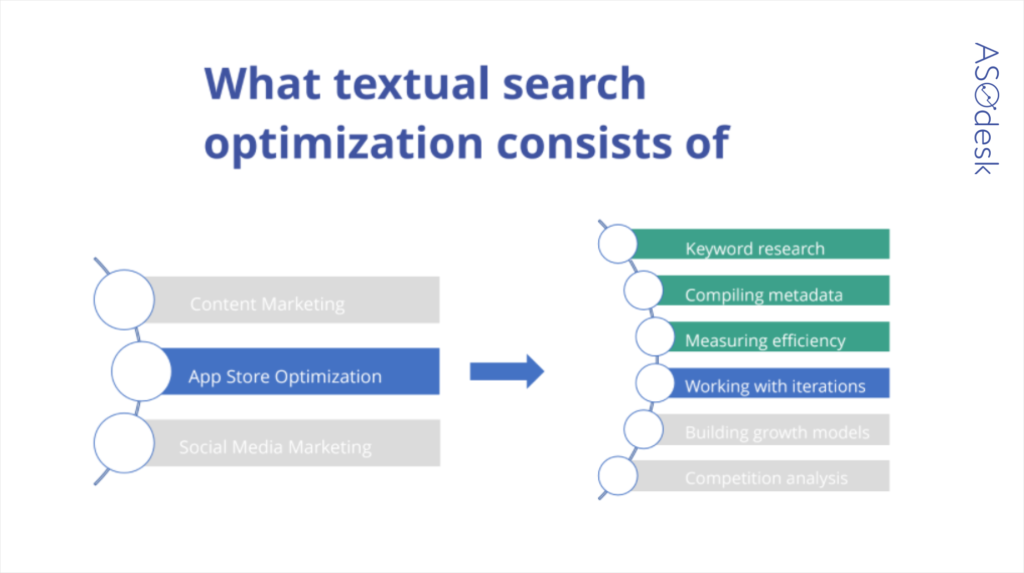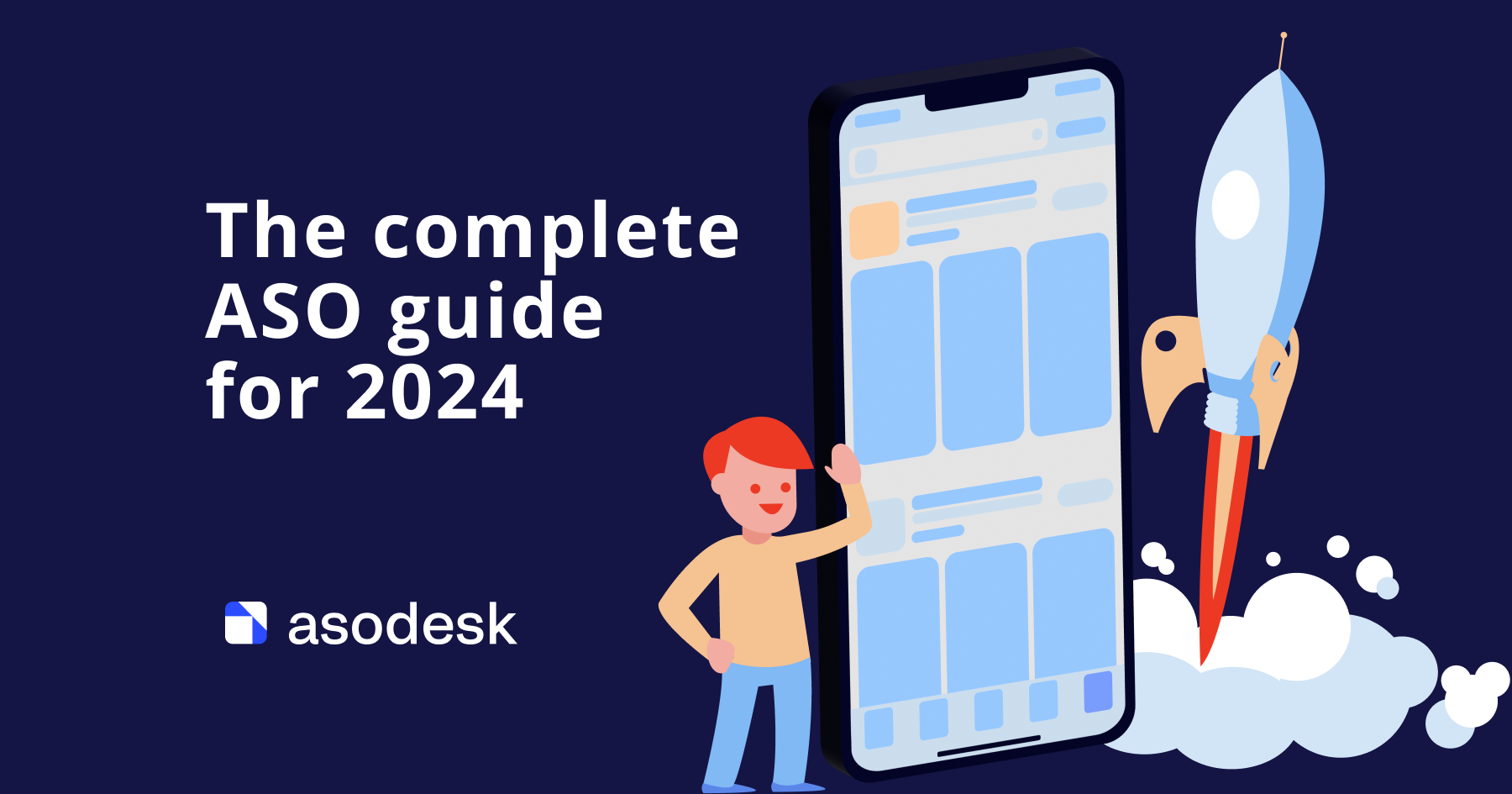How can iteration help specialist in App Store Optimization

Bringing an app to top positions on App Store and Google play takes more than a one-time optimization. At least 6-8 iterations are required.
In this article, Artem Tkachuk, Onde.app ASO manager and ASOdesk ASO expert, explains how an ASO specialist should go about using iterations to produce results.
An app’s positioning in search results depends on season of the year, day of the week, number of competitors and other externals. Yesterday’s traffic-driving keyword may cease to trend today. This is why ASO is a continuous process, kept alive by regular iterating.

This is a series of articles based on lectures of ASOdesk Academy, where we touch upon the main aspects of optimizing software for app stores. Previous articles dealt with quantifying textual ASO’s efficiency and what to consider when optimizing an app’s page for foreign languages. You can watch the original lecture here:
Why does ASO need more than one iteration
You do not know how high your app will be placed
In the beginning of ASO work you do not know what search queries will be relevant to the app. Some may push an app up; others may shove it out of the results list. There is no telling where the app will appear without a few iterations.
It may happen that after the first iteration your app will land on the low end of the list, where users do not reach. Since this does not maximize traffic, you will need to iterate for corrections. Keywords may be placed in the app’s name, hopefully this will boost it to the top. Or you can delete some keywords or move them out to a less important fiels.
It is also important to try out different keywords, takes on the name and description, look at how well the visual elements work for searching.
Users’ preferences change
You may find that apps that were in demand three months ago have become irrelevant.
For instance, U.S. users were more interested in running apps before the quarantines. Since March and April of 2020 they began to look for home exercise tools. Our client in question had to edit the app itself, change its promotion and rebuild the keyword core.
Competitors elbow you out
Have you done one-two iterations and then stopped? You can be squeezed out by competitors who keep doing ASO.
ASOdesk has a reporting function which displays the keywords most successfully propelling competitors so that you can take advantage of them also.

Remember that App Store gives an optimized app 72 hours before its position in the search updates. Therefore, if competitors iterate on a regular basis, their search roosting will be higher than yours.
You pay for traffic and app receive higher-frequency queries
If you have started to develop the brand and buy traffic, the app will receive higher-frequency queries.
For example, you are only starting out with search optimization. The app’s position is still weak and nowhere in top results. Adding paid traffic, you get boosted higher, which means the ASO strategy can accommodate higher-frequency queries that were out of reach for an unpopular app.
Now you need to edit the metadata to assist Google Play (App Store) in promoting your product. For this you focus on the most important queries, change the title and subtitle to climb higher.
Types of iterations
App Store Optimization pursues three goals for the app:
- Greater keyword ranking: with scope iterations.
- More relevant keyword core: with core-narrowing iterations.
- Search traffic increase: with iterations to maximize installations.
The iteration process looks as follows in ASOdesk:

How different iteration types work
Scope iterations
Here the purpose is to increase keyword ranking, i.e. the number of queries where the app shows up. You must sort through the keyword core and understand in what semantic categories the app stands to gain ground.
Use the chart to check efficiency of the first iteration.

An app’s distribution in search results, by keyword
We have assembled the core, hulled irrelevant queries and working only with relevant ones. The chart shows one of our apps after the initial iteration. We managed to double the scope, which means that the first scope iteration was successful.
It takes two or three iterations, at least, to to find on all search queries. For example, our customers have discovered that keywords “fitness home” and “women’s” give good results only after they have been iterated over a few times.
Keyword core narrowing iterations.
These are about increasing ranking of the app’s keywords in a relevant, narrow query category, the most advantageous for promotion at this time.
We proceed by:
- Analyzing select semantic categories.
- Seeing which have potential for growth.
- Delving into these categories to increase ranking there.
For example, we have noticed that the app begins to pop up more frequently for some queries. We respond by focusing on queries in that group and putting as many as we can invent there. We look for synonyms, study the search tips deeper, expand the core, redraw metadata in such a way as to prompt the highest number of installations.

The chart here shows that queries such as “7 min”, “butt workout and fitness app” have grown on +30, +34. On the other hand, “home fitness for weight loss” has dwindled by 2 pounds.
Installation maximization iterations
These serve the purpose of making an app as visible as possible to the relevant user base. The number of relevant queries where the app is in the Top 10 needs to increase.
The most valuable queries are those that can move the app to where users will see it, like from the Top 50. Keep in mind that we are also working within a certain section of keywords.
Our program has a Semantic chart function to analyze efficiency with six fields: queries, Top 1 to Top 5, Top 5 to Top 20 and the rest. High and low-frequency queries are separated by a median value.
We should choose queries that will produce the best effect and focus on them.

Here we need to move queries from the yellow sector to the green and keep the greens where they are. It is important to hold on to queries that are already giving you traffic, if they are relevant. Try not to lose them.
It takes at least two of these installation-driven iterations. Then the semantic category can be changed, if necessary. The running app reinvented as a home exercise app was promoted differently, the internal structure changed, so did the name, description, visual elements and semantic category.
ASO rookies often make the mistake of iterating “from the start”, without looking closely at semantic categories (query groups) that are driving position growth.
It is a wrong-headed approach to change ASO completely! You must have a definite purpose in mind, see a small semantic category which can be grown. Do not hope that you will reassemble the core and the app will shoot to top positions on the backs of some queries. Such queries would have given some results in the first place.
Conclusions
- Proper development of ASO takes 6-8 iterations to begin with. As users’ interests shift, competitors press on and new search queries become available, it is important to iterate on a constant basis.
- The purpose of iterations is to increase an app’s keyword ranking, make the keyword core more relevant, bolster search traffic and obtain the most possible installations.
- Instead of iterating from the start every time, use your previous ASO experience! Always look at the past results, analyze semantic categories that may help improve the app’s listing.











